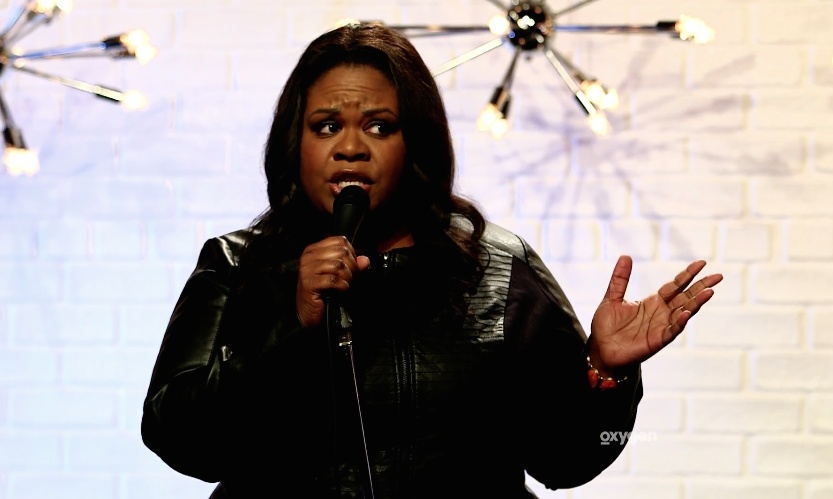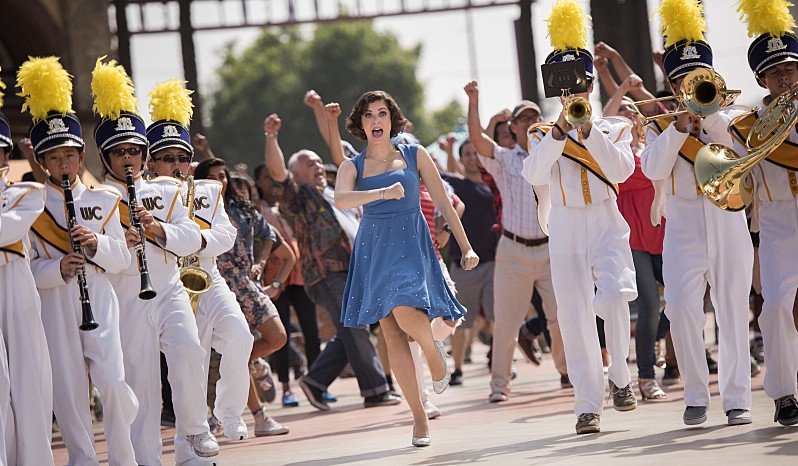TV is supposed to be better than the movies for women creatives. It is supposed to be the place where women are taken seriously because we watch TV and we buy the things that are advertised on TV. TV shows want women because the advertisers want women because the women buy their products.
And you’d think from the amount of stories on the new women centric TV shows coming up (Playboy Club controversy, Pan Am, Whitney etc) that there would be women everywhere in the creative ranks of TV land.
Well sure there are women everywhere, it’s just that there are very few of them. Here are some of them: There are some great women creating and writing TV shows. Look at Shonda Rhimes (who is a mogul with multiple shows on the air), Tina Fey, Jenji Kohan from Weeds; Michelle King of The Good Wife; the women of CSI Carol Mendelsohn and Ann Donahue; Southland’s Ann Biderman; Janet Tamaro of Rizzoli & Isles among others.
And coming up this season (I need to do more research of all the new shows with female showrunners) we have: Liz Meriwether with The New Girl; Alexandra Cunningham with Prime Suspect; UPDATE: Emily Spivey with Up All Night; Emily Kapnek with Suburgatory and Theresa Rebeck with Smash (in Feb). (If you know of other shows with female creators and or showrunners premiering this season, send them my way.)
And by the way if you think that a show like The Playboy Club is full of women behind the scenes because it is about women, I have a bridge I can sell you cheap. Men have been creating shows about women — about how they want women to be and act.
But let’s be real. The numbers suck. The statistics released this week by Martha Lauzen at the Center for the Study of Women in TV and Film (and I say again thank goddess for her that we even have statistics) show that women have REGRESSED behind the scenes in writing gigs.
In the season that just ended women held 25% of all jobs behind the scenes on TV. Here are the jobs tracked: creators, directors, writers, producers, executive producers, editors, and directors of photography. That is down from 27% the previous season.
Now the number that is staggering is the number of women writers. That plummeted from 29% to 15%. That stat is the number of women whose names appear as the writer of an episode. (A random episode of every drama and sitcoms from the major networks were assessed for this stat.) That is not the number of female writers on the staff. In TV writers come in at different levels. The lowest level is staff writer and the highest level is executive producer. There are several levels in between.
And the stats show that “84% of the programs employed no women writers” which means that 84% of the randomly selected episodes that were used for this evaluation had no female name on them at all. Shameful.
Another stat worth lamenting — women created only 18% of the shows. That means less than 1 in 5 of the shows you watch have a woman creator.
Other takeaways:
• Women hire women: Shows with female creators have more female characters
• Directing on TV is just as bad as directing in films: women made up 11% of all directors, down 5 points from a year ago.
• The CW has the most female characters with 52% and NBC has the least with 36%
• 43% of all major characters on TV shows were women — sitcoms has the least female characters and reality TV the most.
• Women are younger than men on TV shows.
• Most women on TV are white
• Viewers are less likely to know about a woman’s job than a man’s.
UPDATE: Some further thoughts: The statistics in this report count only the networks — CBS, NBC, ABC, FOX, CW — it does not count cable. And remember, this survey is one sample show from each series, not the number of female writers employed on each show. So for example they could have picked an episode of say Grey’s Anatomy that happened to be written by a guy. No one would look at Grey’s Anatomy as a place where women are not getting gigs. But on the other hand they could have picked the one show on say Glee that had a female writer. Until this upcoming season most all shows were written by the male creators so that wouldn’t have been representative of Glee either. That’s what random samplings get you. If you want to see how many women are employed in in Hollywood, read the Writer’s Guild Report. According to their stats women writers make up 24% of all writers working in Hollywood.
Here’s the research for you to see it for yourself.
Boxed In: Employment of Behind-the-Scenes and On-Screen Women in the 2010–11 Prime-time Television Season
by Martha M. Lauzen, Ph.D.
Copyright © 2011– All rights reserved.
Women comprised 25% of all individuals working as creators, directors, writers, producers, executive producers, editors, and directors of photography on broadcast television programs during the 2010–11 prime-time season. This represents a decrease of 2 percentage points from last season (2009–2010) and an increase of 4 percentage points since 1997–98.
The percentage of women working as writers on broadcast programs plummeted this season, declining from 29% in 2009–2010 to 15% in 2010–2011. The percentage of women directors also declined from 16% in 2009–2010 to 11% in 2010–2011.
On screen, females accounted for 41% of all characters. This represents a decline of 2 percentage points from the 2007–08 season when female characters accounted for a historical high of 43% of characters. However, programs with at least one woman creator or writer featured more female characters than programs with no women creators or writers.
Findings/Behind the Scenes
•This study includes individuals working behind the scenes on one randomly selected episode of every prime-time drama, situation comedy, and reality series airing on ABC, CBS, CW, Fox, and NBC.
•Overall, women fared best as producers (37%), followed by executive producers (22%), editors (20%), creators (18%), writers (15%), and directors of photography (4%) (see Figure 1).
Figure 1. Percent of Behind-the-Scenes Women and Men on Broadcast Programs during the 2010–11 Season
•The representation of behind-the- scenes women differs across program genres. Reality programs employed 28% women and 72% men. Dramas employed 25% women and 75% men. Situation comedies employed 22% women and 78% men.
•The representation of behind-the-scenes women differs substantially by network. Women accounted for 28% of behind-the-scenes individuals at CW and ABC, followed by 26% at CBS, 22% at NBC, and 18% at Fox.
Figure 2. Historical Comparison of Percentages of Behind-the-Scenes Employment of Women on Broadcast Programs by Role
•Women comprised 18% of creators. This represents a decline of three percentage points from the 2009–10 season, and no change from 1997–98. 86% of programs employed no women creators (see Figure 2).
•Women accounted for 22% of executive producers. This represents no change from 2009–10 and an increase of 3 percentage points from 19% in 1997- 98. 25% of programs employed no women executive producers.
•Women comprised 37% of producers. This represents a decrease of 2 percentage points from 2009–10 (39%) but an increase of 8
percentage points from 1997–98 (29%). 15% of programs had no female producers.
•Women accounted for 15% of writers. This represents a decline of 14 percentage points from the 2009–10 season and a decrease of 5 percentage points from 20% in 1997–98. 84% of the programs employed no women writers.
•Women comprised 11% of directors. This represents a decrease of 5 percentage points from 2009–10 and an increase of 3 percentage points from 1997–98. 89% of programs employed no women directors.
•Women accounted for 20% of editors. This represents an increase of one percentage point from 2009–10 and an increase of 5 percentage points from 1997–98. This represents a recent historical high. 80% of programs employed no women editors.
•Women comprised 4% of directors of photography. This represents an increase of one percentage point from 2009–10 and an increase of 4 percentage points from 1997–98. 97% of programs employed no women directors of photography.
•For the first time, this year’s study also tracked the representation of behind-the-scenes women working on original programs appearing on popular cable channels such as Lifetime, TBS, TNT, and USA. On these channels, women accounted for 23% of behind-the-scenes individuals. By role, women comprised 31% of producers, 25% of writers, 24% of editors, 21% of executive producers, 20% of creators, 10% of directors, and 0% of directors of photography.
Findings/On Screen
•41% of all characters and 43% of major characters were female in the 2010–2011 season. This represents a decline of 2 percentage points from the 2007–08 season when female characters accounted for a historical high of 43% of characters.
•Female characters continue to be younger than their male counterparts. 67% of characters in their 50s and 71% of characters 60 and above were male.
•Female characters 40 and older comprised 11% of all characters. Males 40 and older accounted for 23% of characters.
•76% of female characters were white, 12% were African American, 5% were Asian American, 5% were Latina, and 1% were some other race or ethnicity.
•Viewers were less likely to know the occupational status of female characters than male characters. 36% of female characters but only 22% of male characters had an unknown occupational status.
•Viewers were most likely to see female characters on programs airing on CW where female characters accounted for 52% of all characters. CW is the only network that represents females in accurate proportion to their representation in the U.S. population. On the other networks, females accounted for 43% of characters on ABC programs, 40% on CBS, 39% on Fox, and 36% on NBC.
•Regarding genre, viewers were more likely to see female characters on reality programs where they accounted for 46% of all characters, than on drama programs (40%), or situation comedies (34%).
Findings/Behind the Scenes x On Screen
•On programs with no women writers, females accounted for 39% of all characters. On programs with at least one woman writer, females comprised 43% of characters.
•On programs with no women creators, females accounted for 40% of all characters. On programs with at least one woman creator, females comprised 44% of characters.
Report compiled by Dr. Martha M. Lauzen, Executive Director, Center for the Study of Women in Television and Film, San Diego State University, San Diego, CA, 92182, 619 594–6301
Number of women working in TV falls (LA Times)







